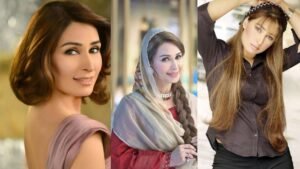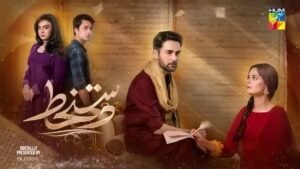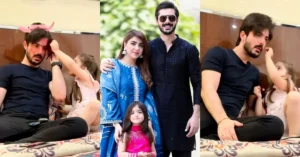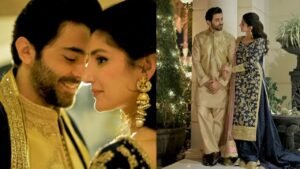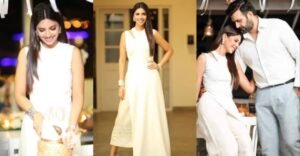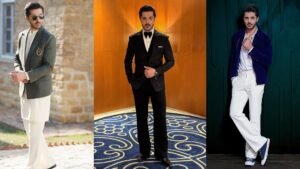In the cultural fabric of Pakistan, weddings are more than personal milestones—they are spectacles of grandeur, symbols of family pride, and often reflections of a family’s social standing. Few weddings have embodied this blend of personal celebration and public grandeur as seamlessly as the wedding of Junaid Safdar, the grandson of former Prime Minister Nawaz Sharif, and Ayesha Saif Khan, daughter of renowned businessman and former NAB chairman Saif-ur-Rehman Khan.
Amid the political backdrop of Pakistan’s evolving landscape, this union of two influential families was not just about marriage—it was about legacy, heritage, and subtle power projection. The Baraat, traditionally the groom’s procession and the highlight of South Asian weddings, was a shining example of how personal joy can merge with national interest and media fascination.


The Families Behind the Fairytale

The groom, Junaid Safdar, is a well-known figure not only because of his political lineage but also due to his education and personal achievements. Holding degrees from prestigious institutions like University College London (UCL) and the University of Cambridge, Junaid has often been seen as the next generation torchbearer of the Sharif family’s political legacy.
His bride, Ayesha Saif Khan, brings her own pedigree to the union. The daughter of Saif-ur-Rehman Khan, a businessman with deep ties to Qatar and Pakistan’s political circles, Ayesha represents grace, sophistication, and a connection to international business networks. Together, the couple represents a convergence of political, social, and business elite spheres.
The Setting: Where Elegance Met Grandeur

The Baraat was hosted at Abbas Afridi’s lavish farmhouse in Chak Shahzad, Islamabad, a venue known for opulent events and picturesque settings. As soon as guests entered, they were greeted by stunning floral installations, elaborate chandeliers suspended from the ceilings, and the rhythmic beats of dhol walas echoing across the estate.
The event wasn’t merely elegant—it was cinematic.
From the rolling lawns adorned with soft fairy lights to meticulously curated flower arrangements, no detail was overlooked. A bespoke entrance canopy welcomed the Baraat procession, creating the perfect photo moment, while the venue’s ambient lighting offered a warm, royal glow to the entire evening.
The Star-Studded Guest List

Naturally, a wedding of this magnitude attracted a glittering array of guests. Pakistan Muslim League-Nawaz (PML-N) leaders, prominent political figures, business moguls, and celebrities were in attendance.
- Shehbaz Sharif, Junaid’s uncle and the sitting Prime Minister, made a notable appearance dressed in traditional Pakistani attire, greeting guests warmly.

- Maryam Nawaz, mother of the groom and Vice President of PML-N, was one of the most admired figures of the evening. Her presence was not only maternal but symbolic, as she welcomed well-wishers and played the graceful host with dignity and poise.
- Distinguished business leaders, diplomats, and close family friends completed the list of attendees, lending the event the feel of a royal court rather than a typical family wedding.

The Fashion: Defining Bridal Glamour and Political Elegance
Pakistani weddings have increasingly become fashion showcases, and this event was no exception.
The Groom

Junaid Safdar exuded confidence and royal charm in his ivory sherwani designed by HSY (Hassan Sheheryar Yasin). The sherwani was intricately detailed, featuring delicate threadwork with subtle yet luxurious embellishments. His look was completed with a matching ivory safa (turban) adorned with a signature brooch and gold detailing. A true blend of eastern regality and modern tailoring.
The Bride
But it was Ayesha Saif Khan who stole the show. She wore an opulent Bunto Kazmi bridal ensemble—an iconic choice for Pakistani brides seeking traditional craftsmanship blended with timeless aesthetics. Her gold-toned lehenga, meticulously hand-embroidered, shimmered with each step.

She completed her look with heavy kundan jewelry accented with emeralds, lending a pop of rich color to her bridal ensemble. Ayesha’s makeup was minimalist yet radiant, allowing her natural beauty and regal attire to speak volumes.
Maryam Nawaz: The Fashion Icon
Maryam Nawaz herself made a bold fashion statement by donning a deep emerald green velvet ensemble by Nomi Ansari. Embellished with traditional motifs and paired with heavy jewelry, her outfit reflected both political stature and refined taste. Her elegant appearance was widely praised across social media platforms, once again cementing her reputation as a trendsetter.
The Ceremony: A Symphony of Traditions and Emotions
As the Baraat procession arrived at the venue, the atmosphere reached a crescendo of excitement. Friends and family cheered as Junaid made his way to the main stage under a canopy of shimmering lights and fresh flowers.
One of the most emotional highlights was Ayesha’s bridal entry, gracefully making her way under the traditional phoolon ki chadar (veil of flowers) held by her close relatives. It was a scene of poetic beauty, reflecting centuries-old South Asian customs.
The ceremony was marked by heartfelt speeches, laughter, and countless moments of familial warmth. Friends and family gathered around the couple, showering them with blessings, prayers, and flower petals—a beautiful merging of festivity and emotional sincerity.
The Symbolism: More Than Just a Wedding
For many observers, this wedding represented more than just a union of two individuals. It was:
- A Political Statement: With top-tier political figures in attendance and the grandeur befitting royalty, the Sharif family subtly reaffirmed their enduring relevance in Pakistani politics.
- A Social Showcase: It brought together the elite echelons of society—business leaders, political powerhouses, and cultural icons—all in one place.
- A Cultural Tribute: Despite the international ties of both families, the ceremony honored Pakistani traditions, with every detail—from the dhol beats to the bridal lehenga—celebrating heritage.
Social Media Frenzy
As expected, platforms like Instagram, Twitter, and TikTok lit up with pictures, videos, and analysis of the Baraat. Hashtags like #JunaidSafdarWedding, #AyeshaSaifKhan, and #MaryamNawaz trended for days as admirers and critics alike dissected every detail, from wardrobe choices to guest appearances.
Particularly viral was the moment where Maryam Nawaz stood on stage with her son, the pride evident in her smile as the family celebrated together.
Conclusion: A Wedding Etched in Memory
The Baraat of Junaid Safdar and Ayesha Saif Khan wasn’t just another wedding—it was an event of national interest, wrapped in elegance, tradition, and subtle political messaging. The seamless fusion of cultural richness, familial love, and societal grandeur made this celebration one for the history books.
For Junaid and Ayesha, this was the beginning of a new chapter. For the rest of Pakistan, it was a moment to witness how the country’s elite celebrate love—not just with extravagance, but with legacy, symbolism, and style.


